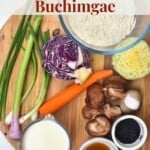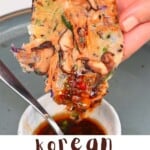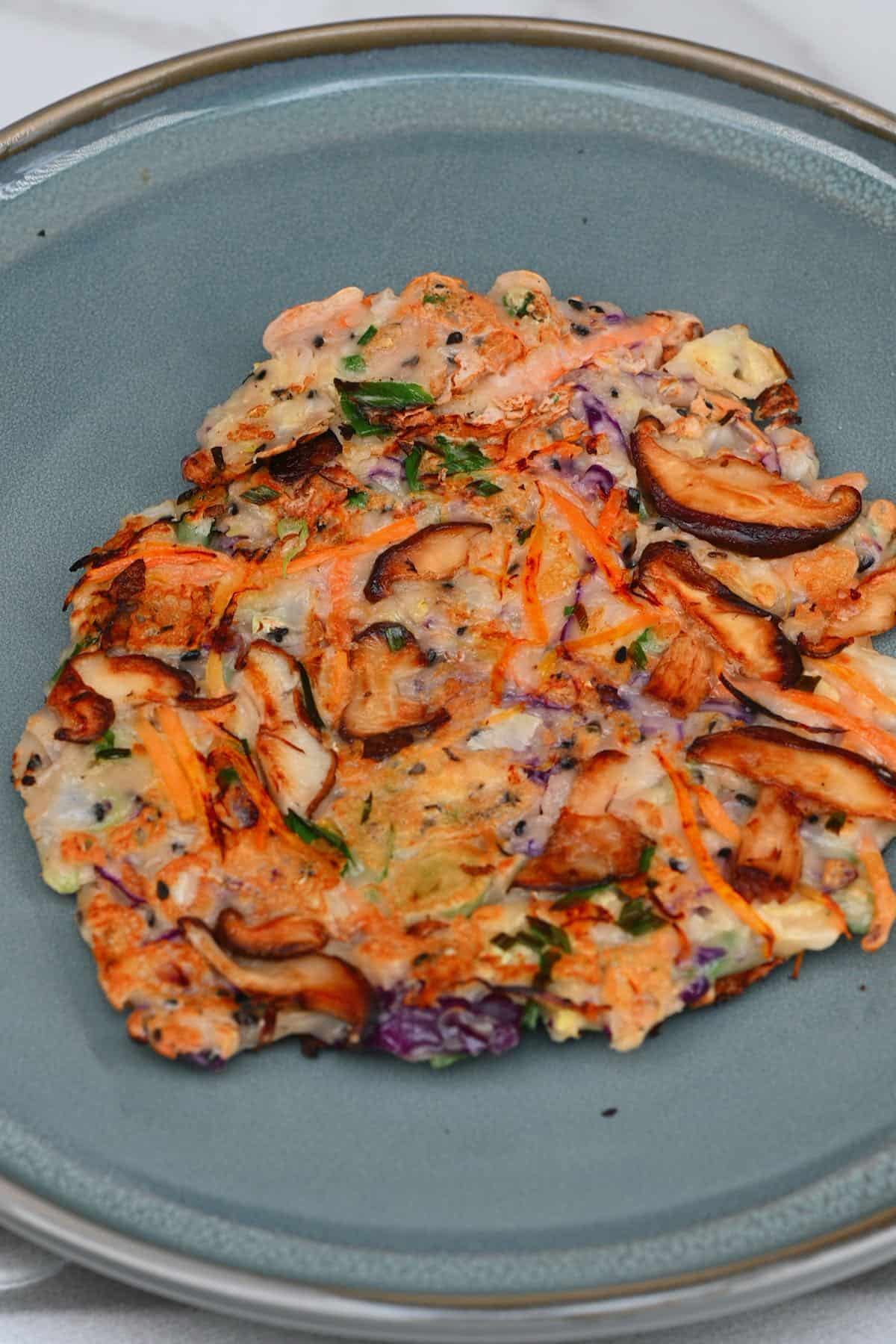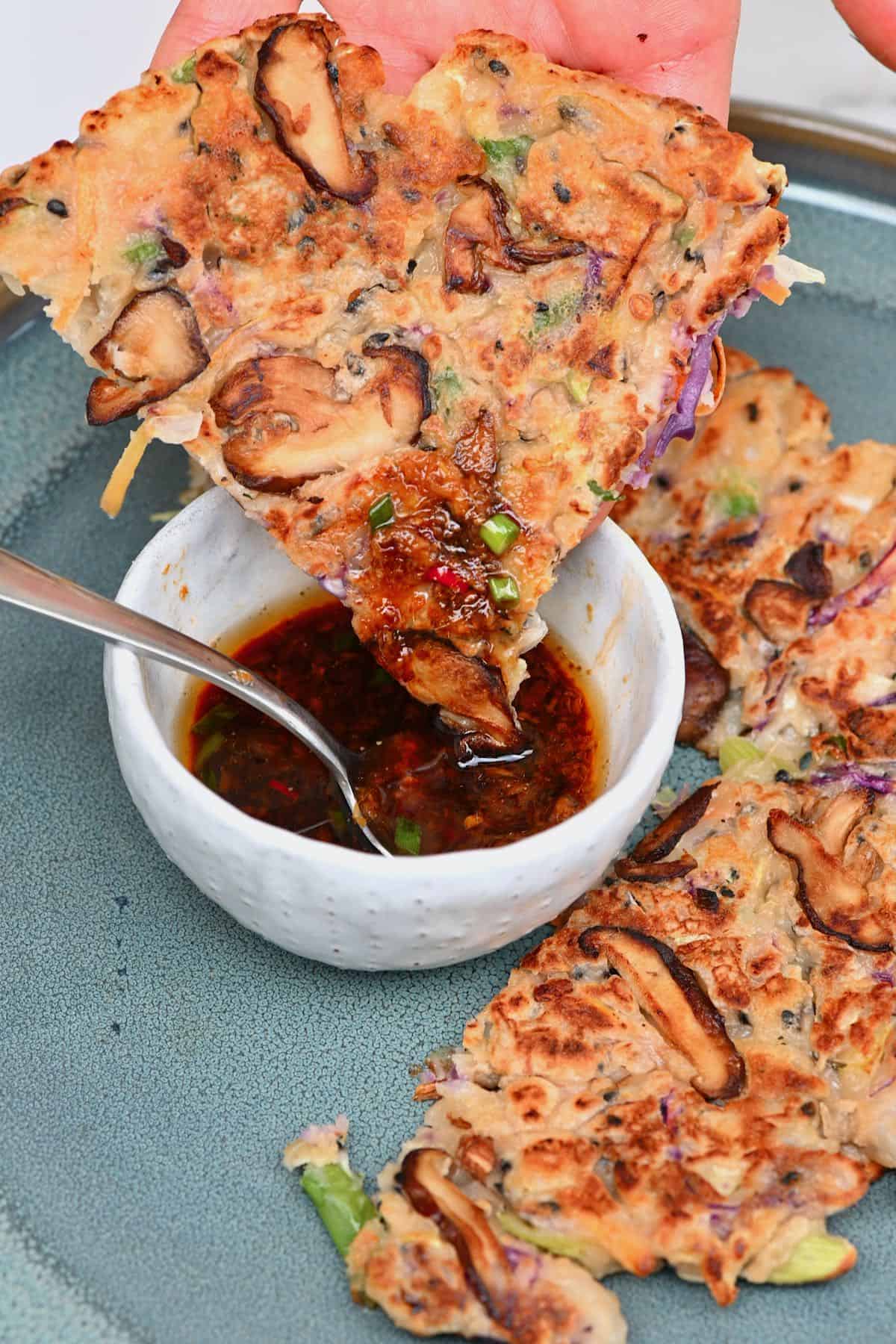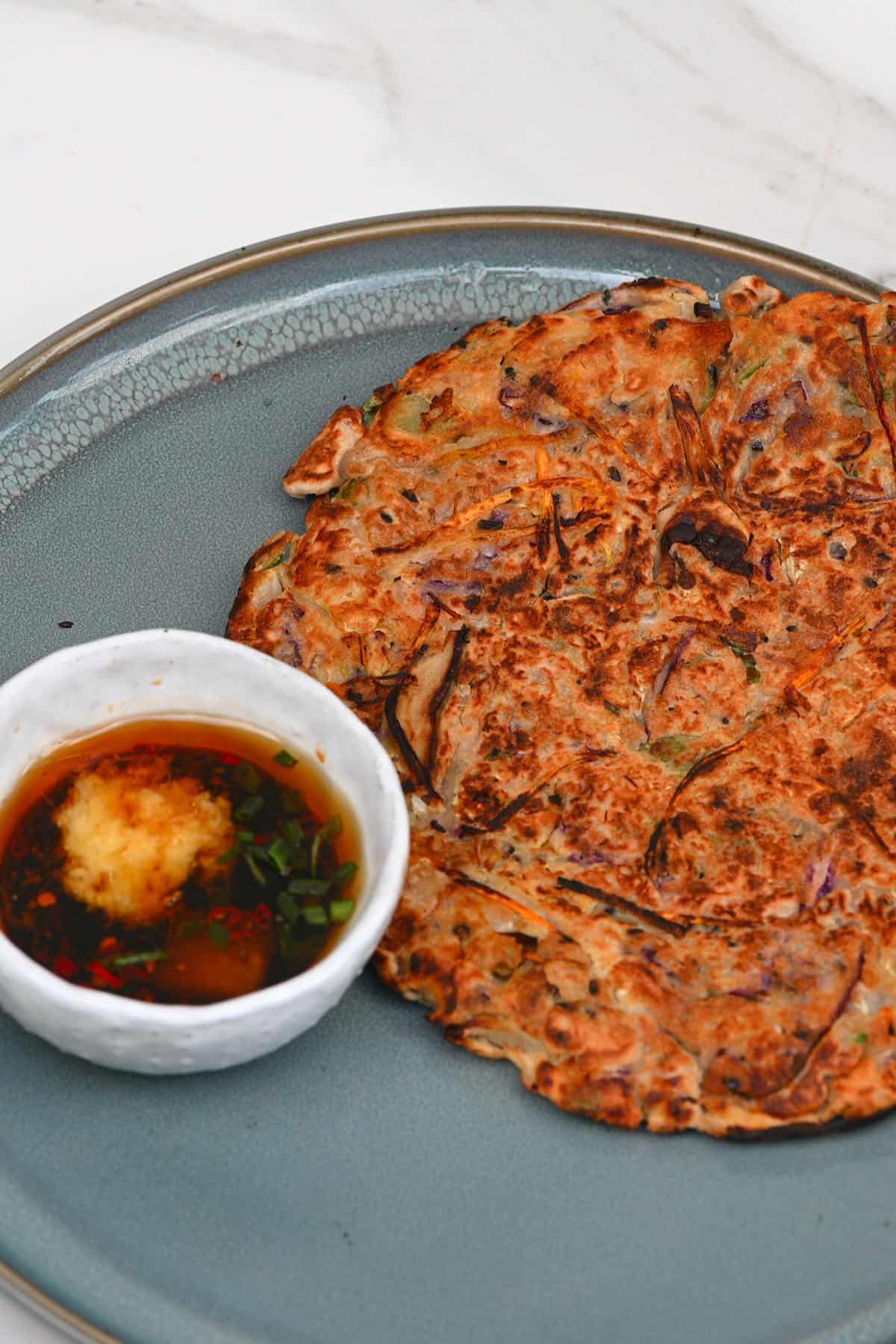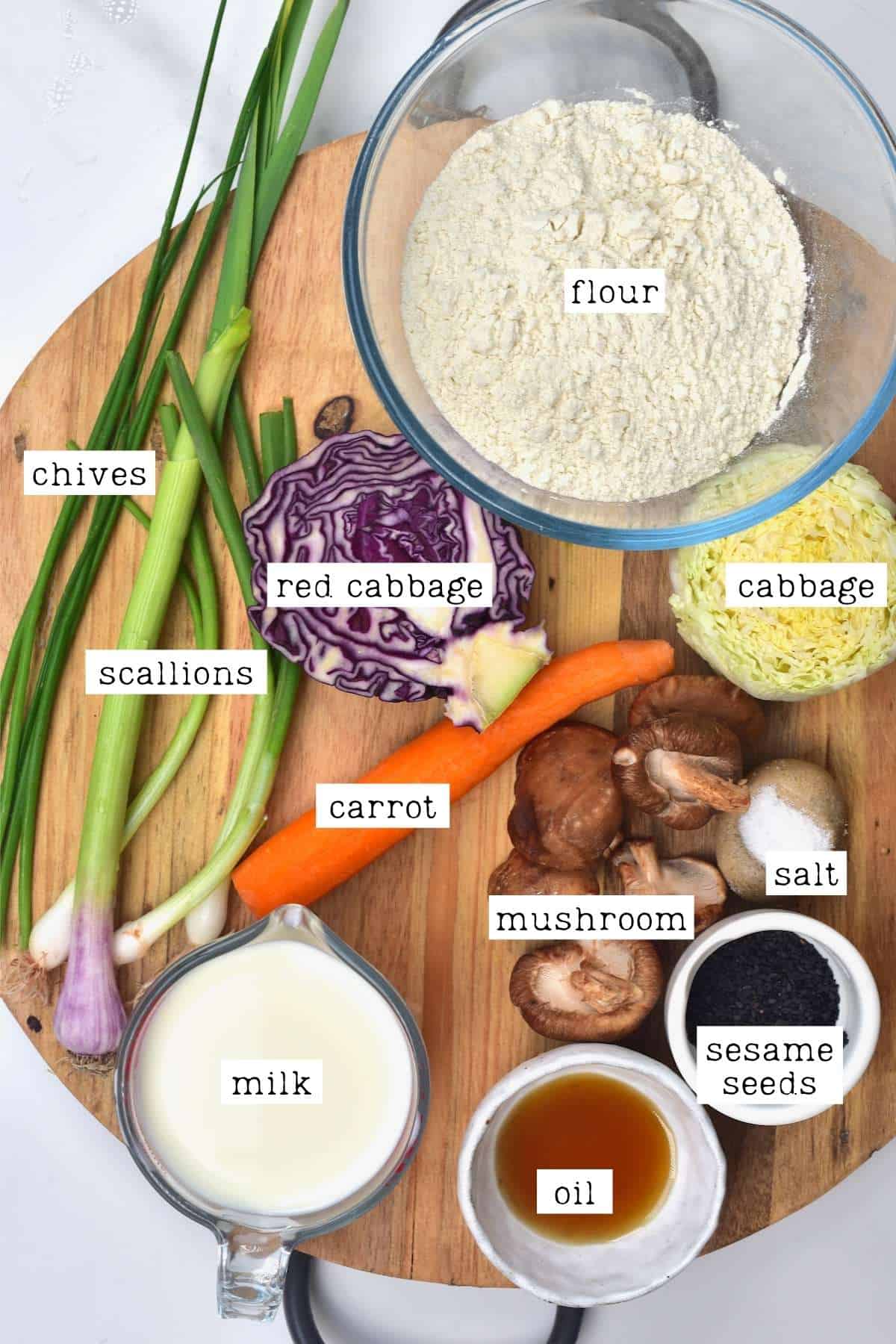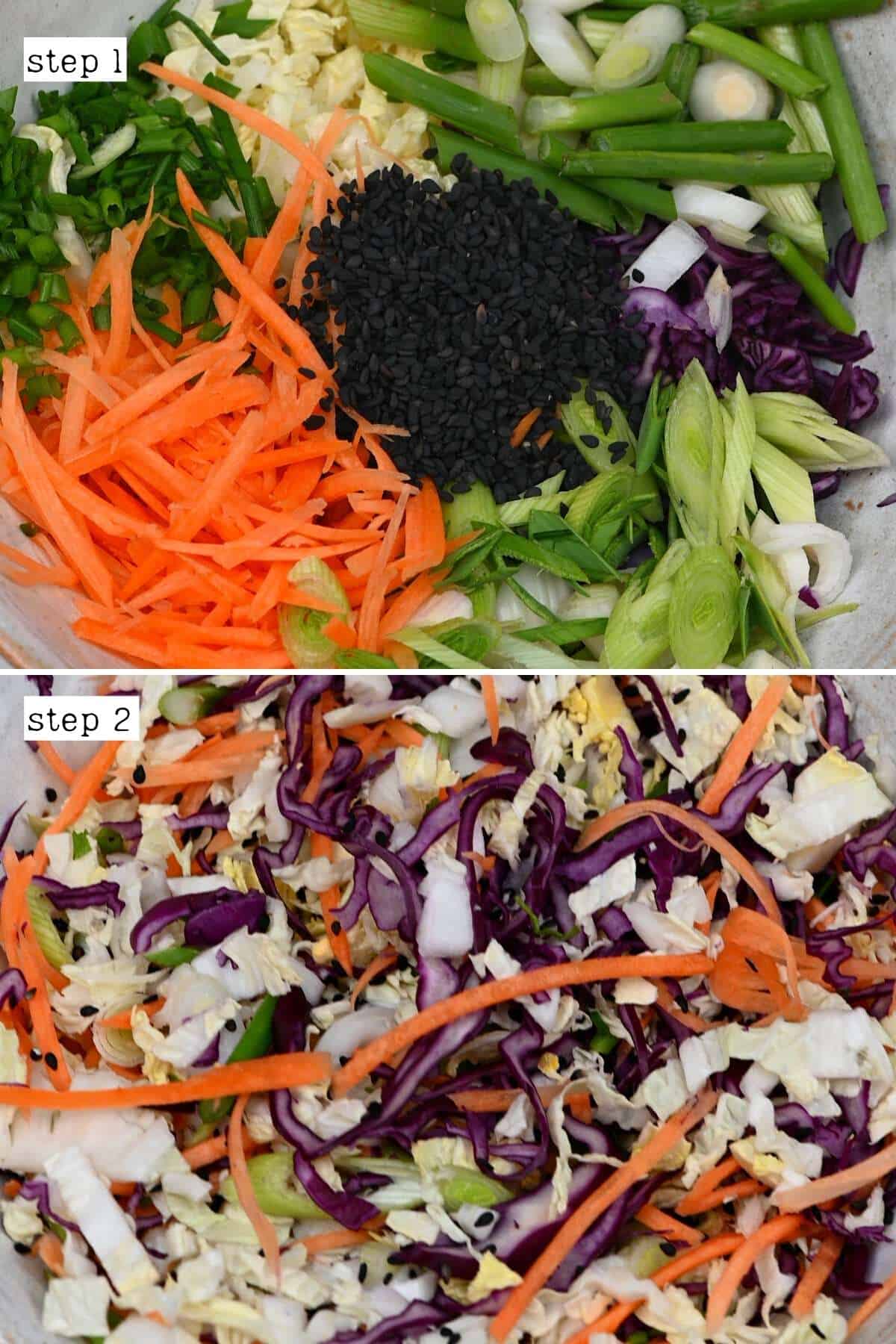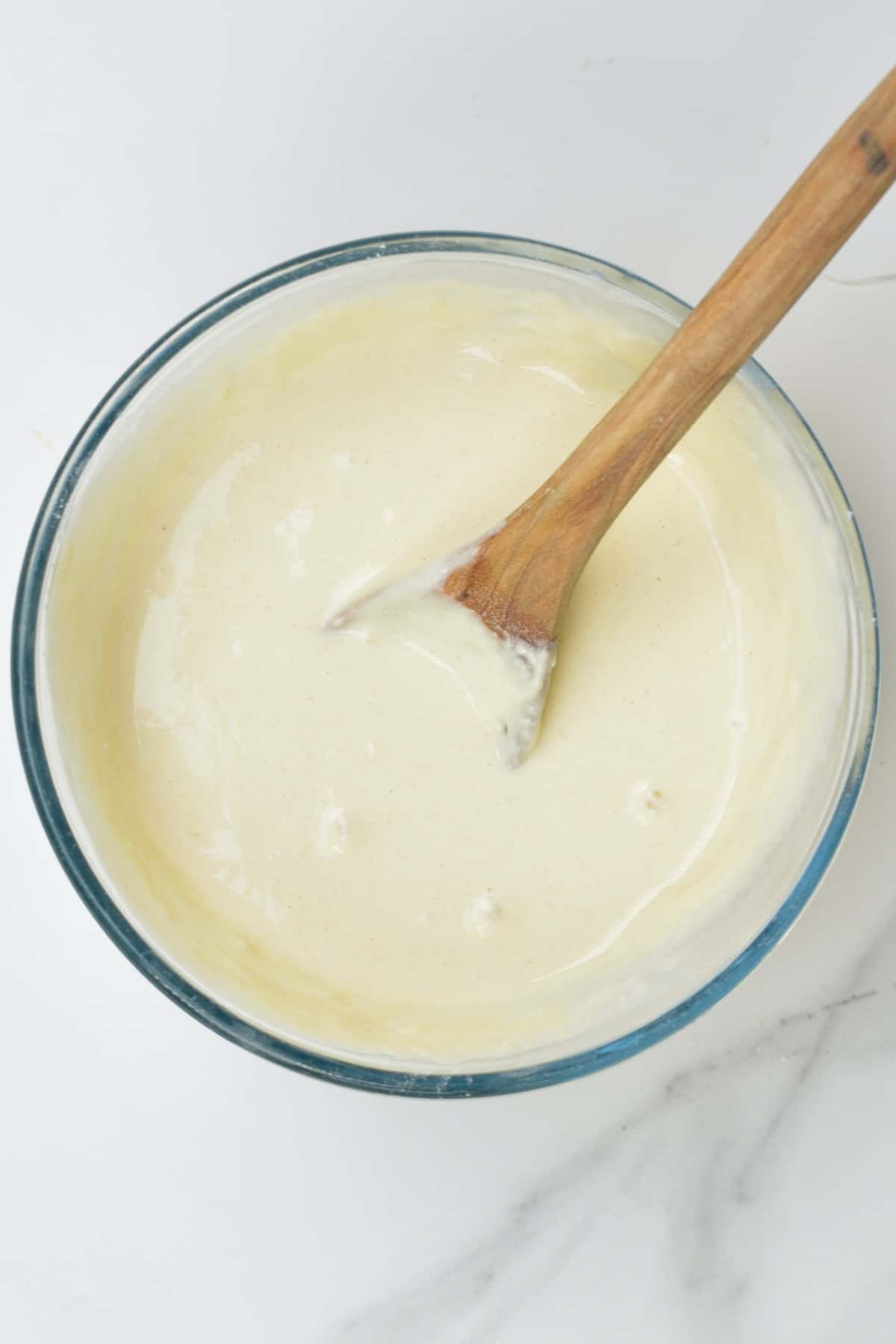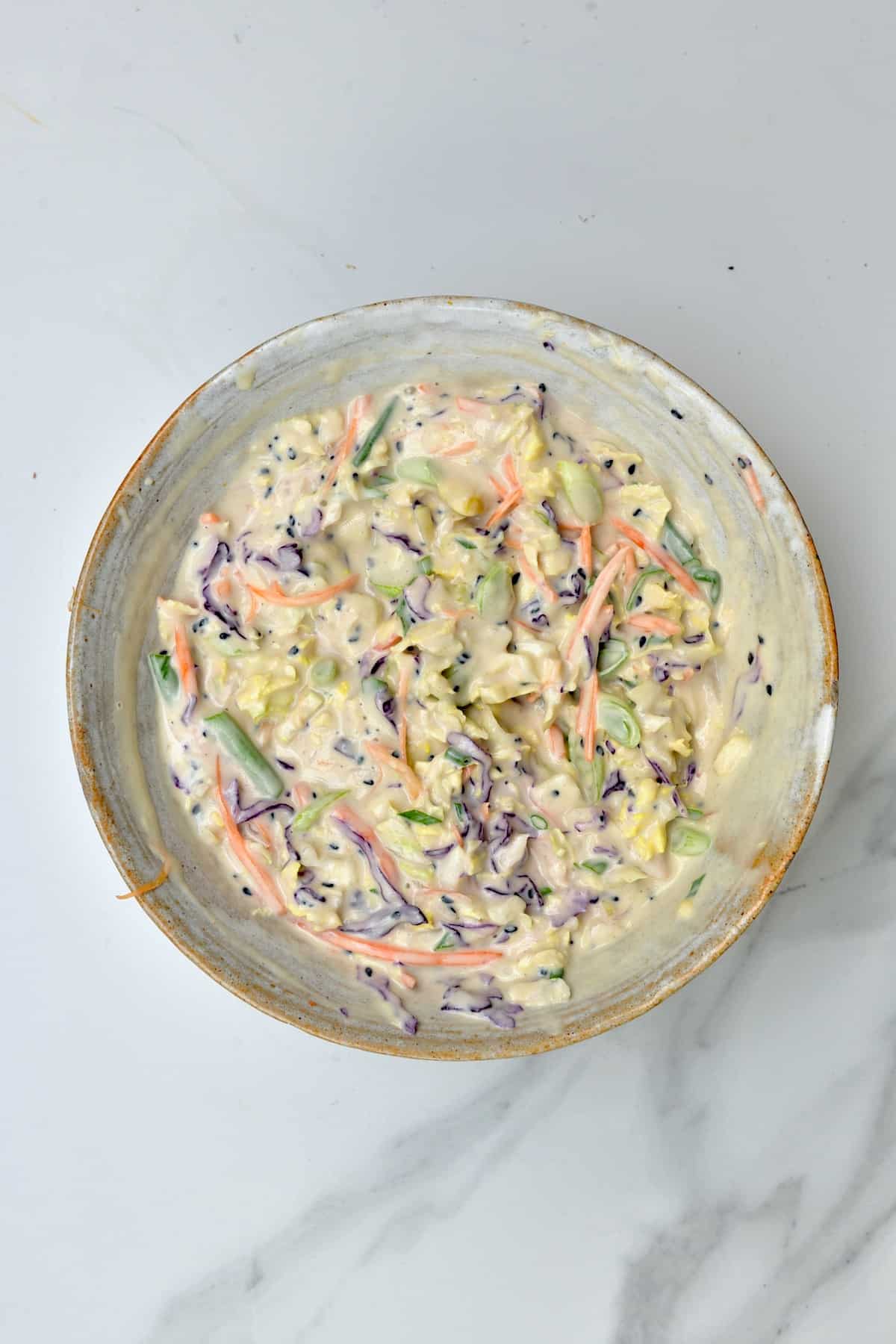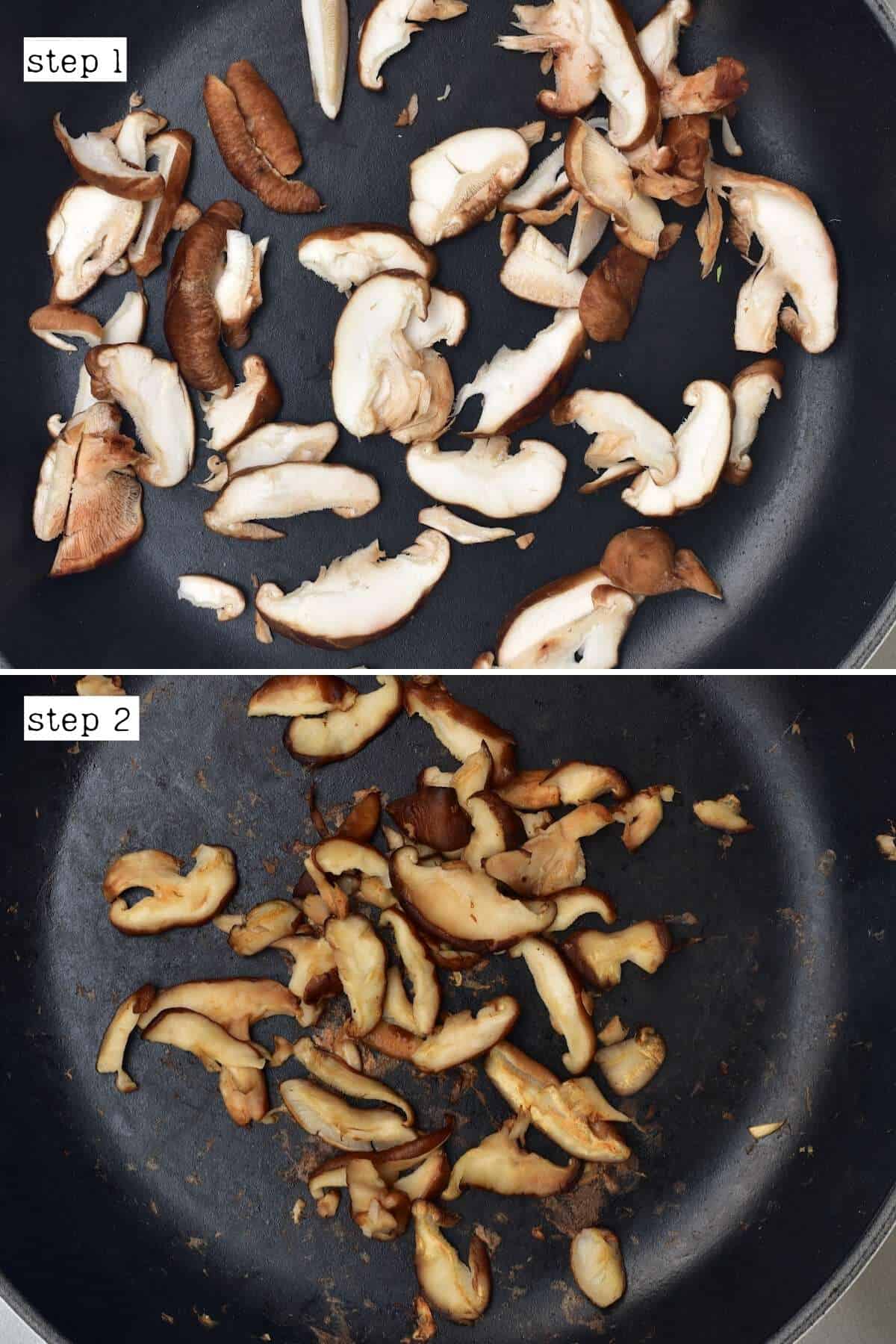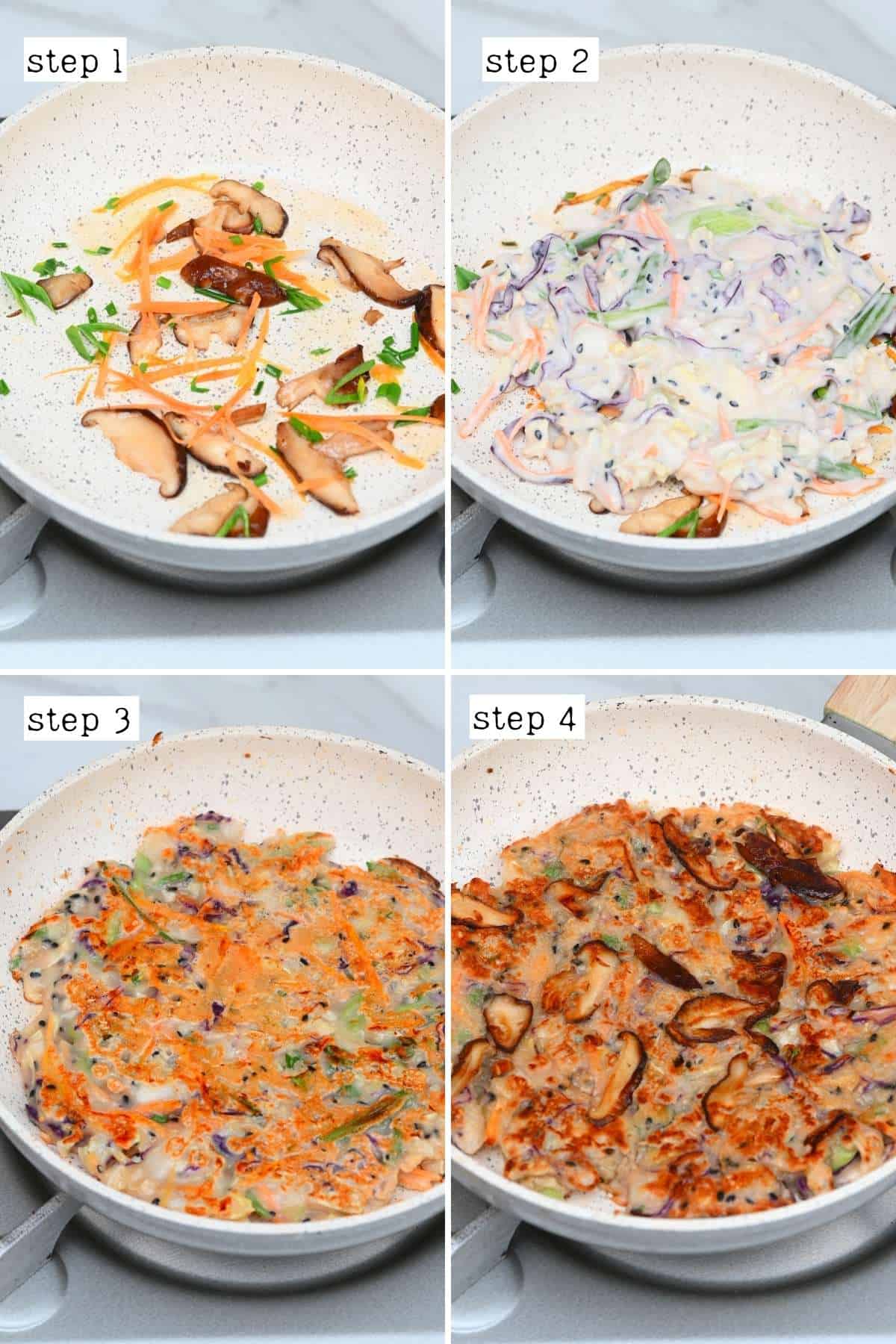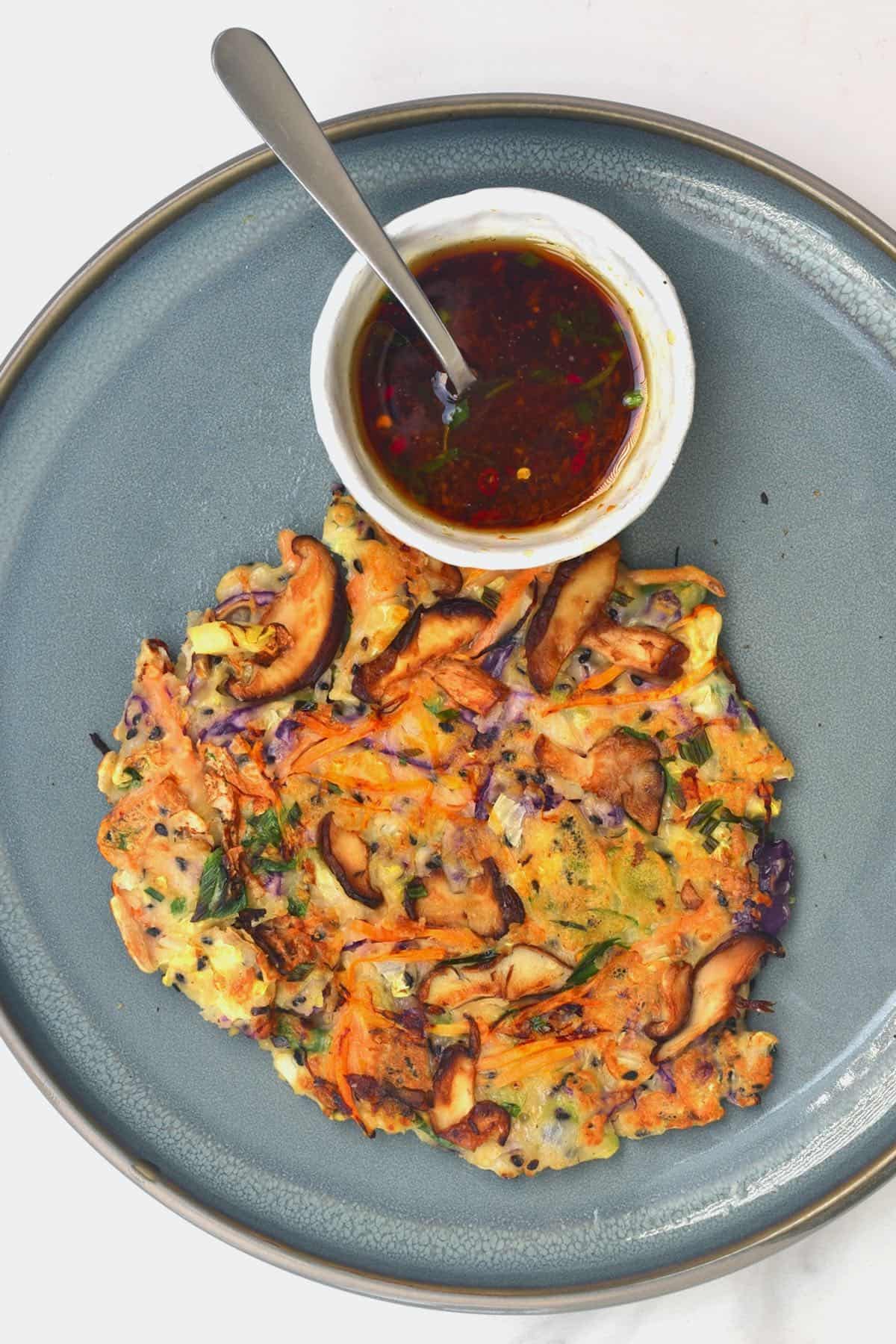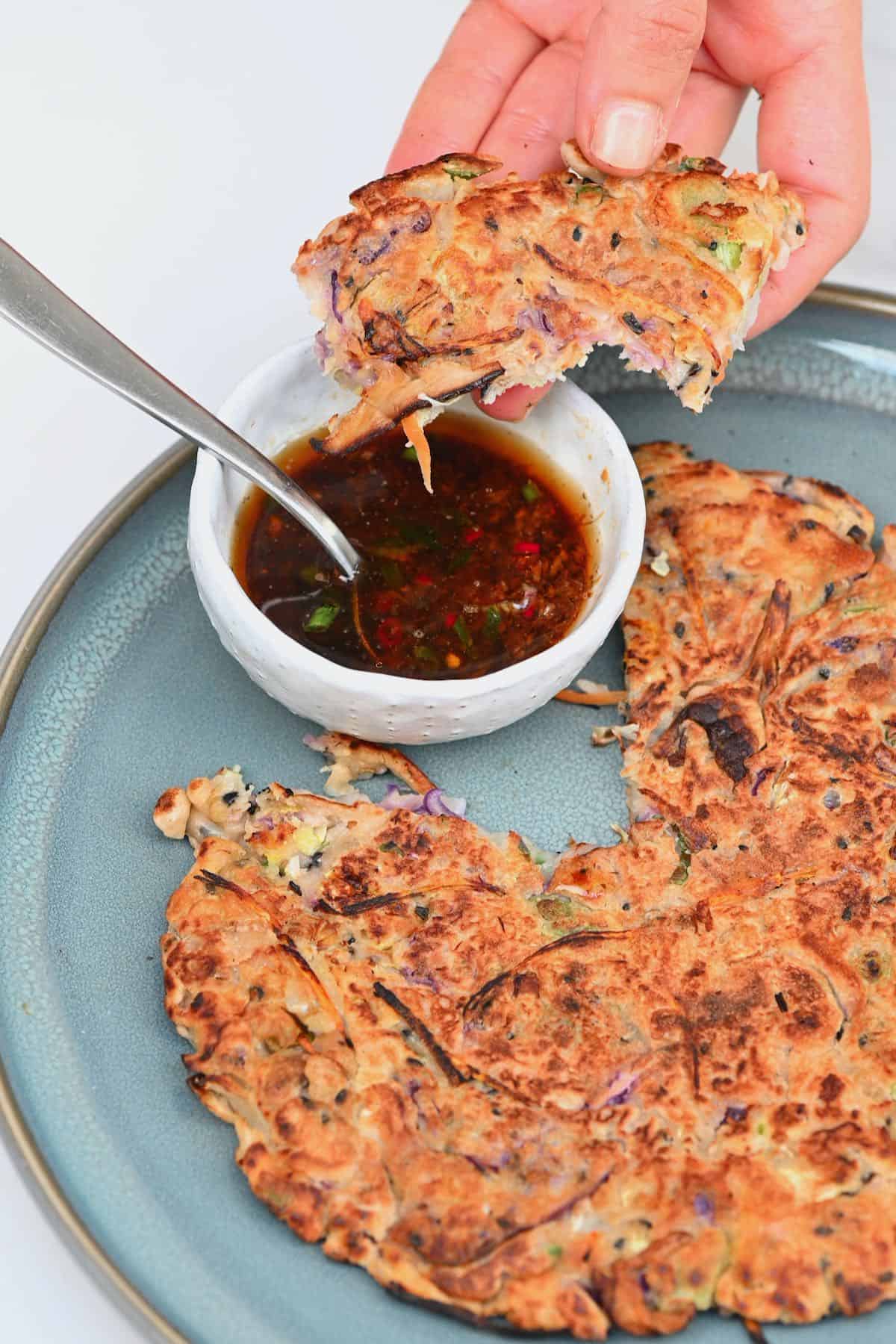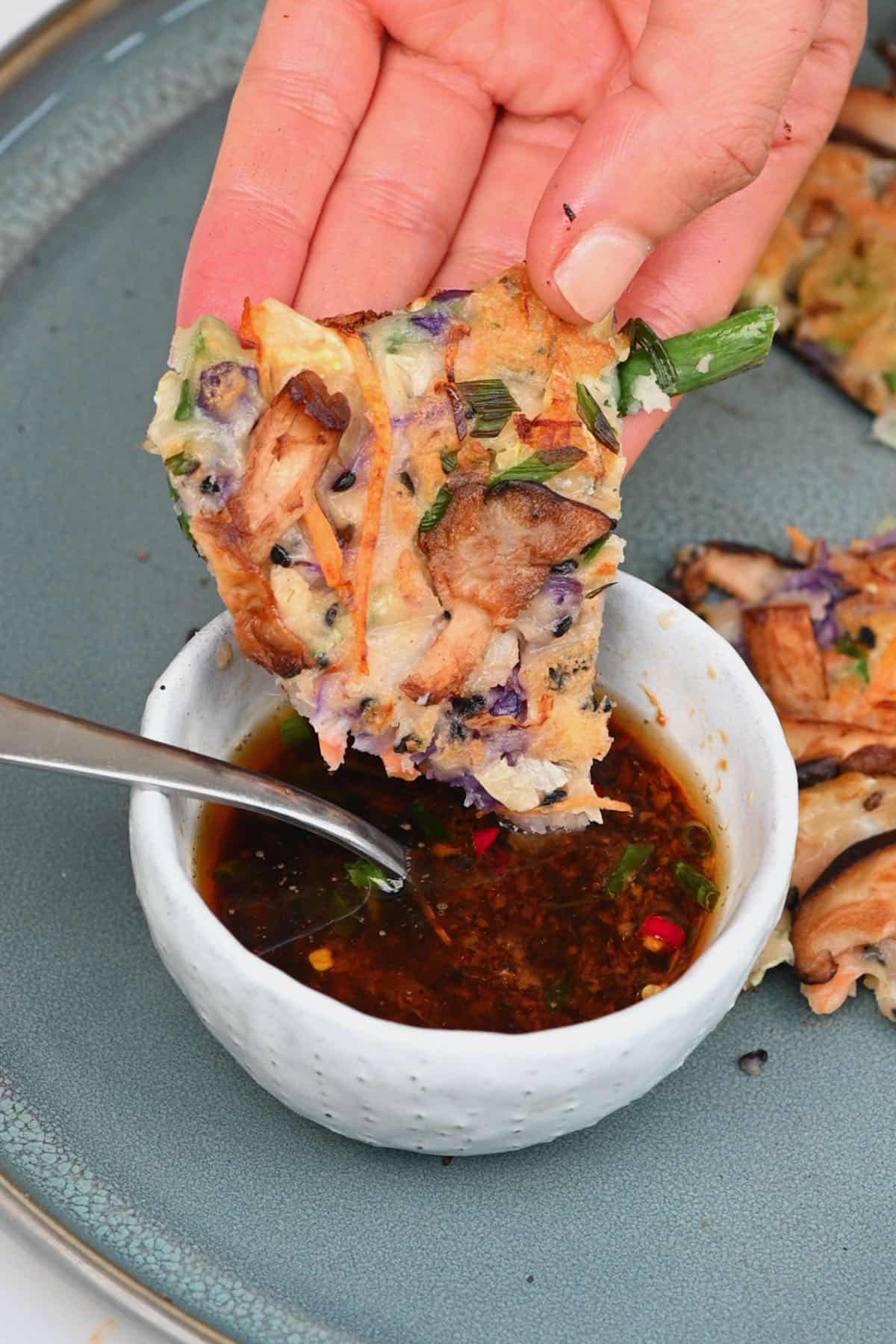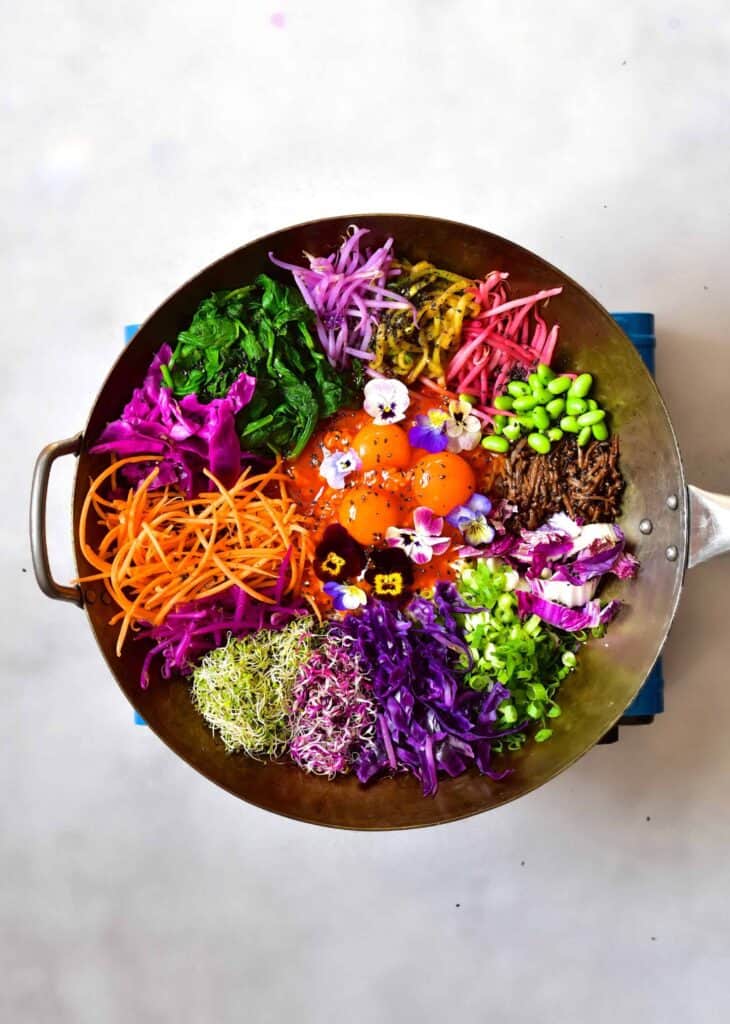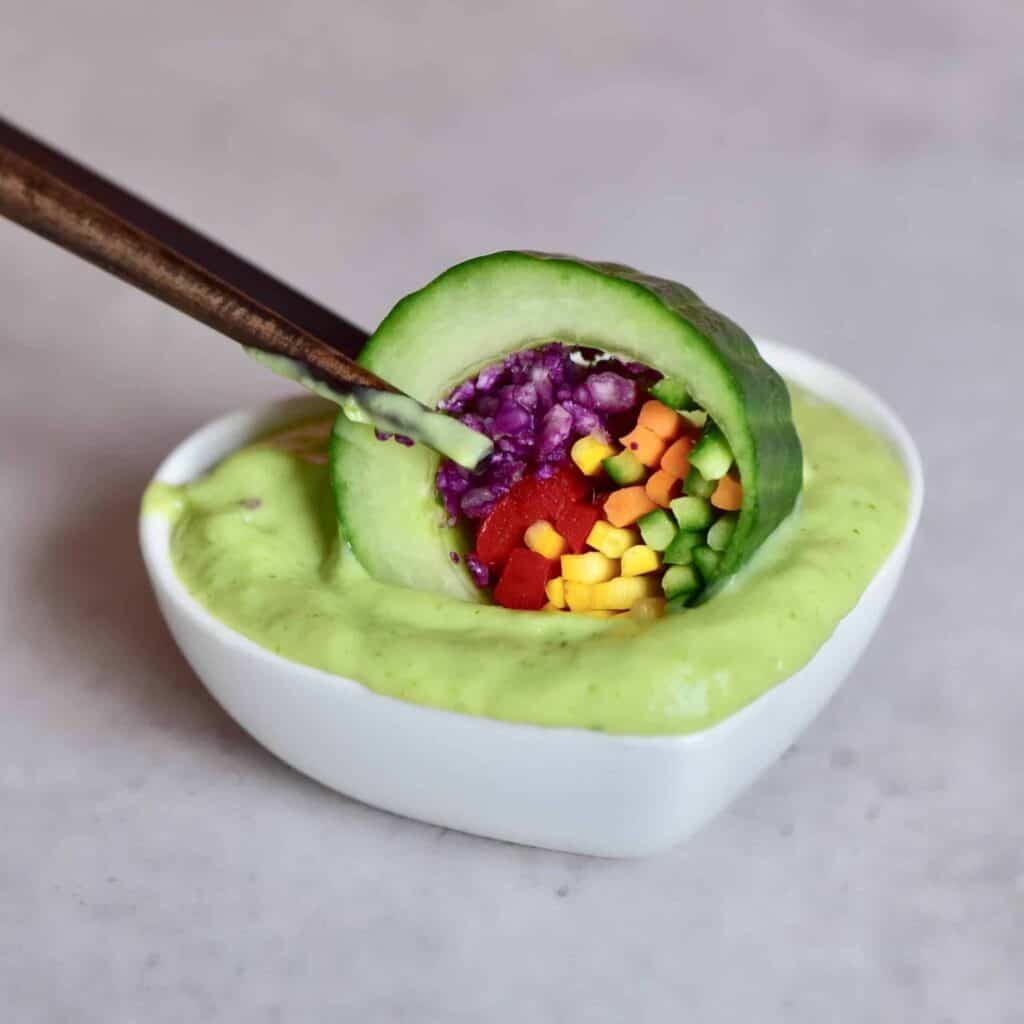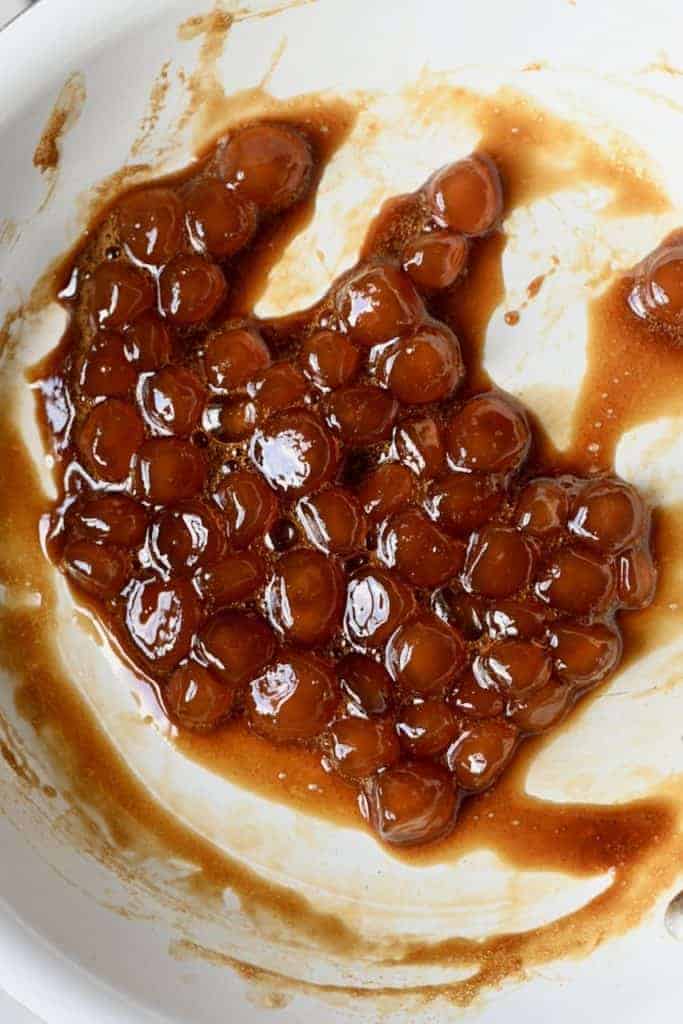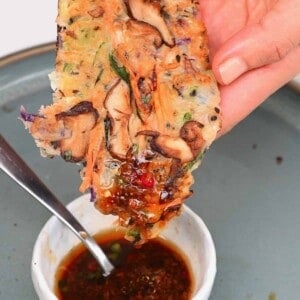This Korean vegetable pancake (Buchimgae ‘pancake’ or Pajeon for ‘scallion pancake’) is packed with veggies then combined with a simple 3-ingredient pancake batter for veggie pancakes crispy on the outside with a soft, moist middle – perfect for serving as an appetizer, snack, or side dish. I love pancakes. I’ve shared recipes for an American pancake cake, fluffy Japanese pancakes, mini pancake cereal, Danish pancakes (aebleskiver), and even oatmeal spinach pancakes. I thought I’d turn to savory flavors this time, though, as, with this Korean veggie pancake recipe, you won’t regret it. It lies somewhere between a veggie omelette and crepe, and I’m all for it! Serve with just simple soy and vinegar-based dipping sauce or add to a larger meal alongside rice and kimchi, etc. I first discovered this Korean pancake recipe when asking for global breakfast inspiration from my followers on Instagram. Want to explore some of my other International breakfast options? How about these Brazilian cheese bread ‘puffs,’ Mexican huevos rancheros, Asian breakfast fried rice with egg, Turkish simit (bagel), French croissants, and NY-style bagels!
What is Buchimgae?
Buchimgae, aka Korean pancake, is the term used to refer to any type of pan-fried ingredient cooked with an egg/batter mixture into a thin pancake/fritter shape. There are several main varieties, including scallion pancake (pajeon), kimchi pancake (kimchi-buchimgae), buckwheat pancake, and mung bean pancake (bindae-tteok). This recipe is for a mixed vegetable pancake, combining mushrooms, carrot, cabbage, scallions, and chive. I’d describe it as a type of pajeon due to the scallions. However, it’s more of a ‘mixed vegetable’ variety, using an egg-free batter. Furthermore, this Asian pancake is also really versatile. Reduce the vegetables for a simple scallion pancake, add seafood, change up the veggies, add in kimchi for a mixed scallion kimchi pancake – the options are endless. Keep reading for some of my top suggestions on how to adapt this recipe!
The Korean Vegetable Pancake Ingredients
Flour: you can use all-purpose flour. However, for lighter and crispier results, I recommend using cake flour which contains starch, to provide the slightly chewy, crispy results typical of Korean pancakes. Some people even combine the pancake batter in a 1:1 ratio with Korean frying mix (which contains rice flour and baking powder for even crispier results).Milk: alternatively, you could use water for a less creamy batter. You may even be able to use sparkling water, which yields slightly lighter, fluffier results. Make sure, whichever you use, that it’s cold!Salt: just a bit to season the batter.Vegetables: I used a combination of carrots, mushrooms, cabbage (napa and red), scallions (green onions; however, try to find Asian scallions if possible – you want ones that are nice and thin), and chives. I also added sesame seeds to the vegetable mix. Sesame oil: I love the extra flavor that using sesame oil provides. However, you could also use a neutral-tasting oil such as avocado or vegetable oil.Korean pancake sauce: I used some dumpling sauce and just omitted the ginger. You could also just use a little soy sauce or this chili honey dip.
Optional Add-ins & Variations
Other vegetables: this recipe is fairly versatile in terms of what veggies you can use. I recommend picking ones that don’t need a lot of cooking time: zucchini (gently squeezed to remove excess liquid), bell peppers, leek, potato (I recommend using thawed hashbrown potato), peas, bean sprouts, eggplant, etc.Seafood: if you eat seafood, you could add shrimp or squid to the buchimgae. For spice: add in some thinly sliced red chilies or a big pinch of chili flakes. Adjust to your personal preference. Make it vegan: all you need to adapt this Korean pancake recipe to vegan is use dairy-free milk like oat milk or soy milk or simply use water. Kimchi: You can adapt this recipe to Korean kimchi pancakes with the addition of kimchi.
You can also serve the veggie pancake alongside sriracha sauce, mayonnaise, or a simple yogurt lemon and dill sauce.
How to Make Korean Pancakes (Buchimgae)
Step 1: Prepare the vegetables
Start by thinly slicing (julienne-style) or shredding all vegetables using a mandoline, shredder, or sharp knife. I shredded the carrot and cabbage and thinly sliced the scallions and mushrooms. Then add all of the vegetables, except the mushrooms, into a medium bowl, add the sesame seeds and mix.
Step 2: Prepare the Korean pancake batter
In a separate bowl, combine the flour, milk, and salt and mix until smooth. The batter should be slightly runnier than regular American pancake batter – add a little extra liquid if needed. Then, add the vegetables (without the mushrooms still) to the batter and fold them to thoroughly incorporate them into the batter. Alternatively, you can leave the two separate. When cooking the Korean vegetable pancake, first add the vegetables to your pan and spread out, then add just enough batter to cover the vegetables.
Step 3: Saute the mushrooms
In a large dry pan, cook the mushrooms over medium heat to allow them to release their excess liquid and brown. Once cooked, you can remove them from the pan, keep them on a plate or bowl and add 1/3 of them to each pancake.
Step 4: Cook the Korean vegetable pancake
Add a little sesame oil to the pan and heat it up then add the mushrooms and pancake batter and cook over medium heat for a few minutes on each side (3-4 minutes) – until the outside is crispy and browned. Repeat with the remaining batter. After flipping the pancake, press down on it with a spatula slightly to encourage browning/crisping. If you want to crisp it up even further then you can transfer the pancake to a broiler for a minute or two for extra crunch! Once cooked, transfer the vegetable pancake to a plate, optionally slice it into smaller pieces, and serve with the sauce of your choice.
How to Make Ahead and Store
Make ahead: you can prepare the vegetables and batter (separately) 2-3 days in advance and store, covered, in the refrigerator until it’s time to combine them and make the Korean pancakes. Fridge: store the leftover savory pancake in an airtight container and enjoy it within 3-4 days. Freeze: allow the veggie pancake to cool entirely before transferring to the freezer. If you’ve made a large batch, then you can pile them up with pieces of parchment paper between (to stop them sticking). Reheat: to reheat the Korean vegetable pancakes, you can place them in a non-stick pan, either dry or with a drop of oil, and heat on both sides until warmed through. Alternatively, for a larger batch, warm them up in the oven. Wrap a stack of pancakes in tin foil and bake for around 10 minutes at 350ºF/175ºC or until warmed. Avoid using a microwave; otherwise, you’ll have limp, sad veggie pancakes.
Recipe Notes & Variations
Use the spoon and level method: when measuring the flour it’s best to spoon the flour into your measuring cup, then level it off with the back of a knife. If you scoop the cup directly into the flour bag, you’ll end up with too much flour and denser pancakes. Don’t overmix the batter: this can develop the gluten and lead to chewy pancakesThe scallion texture: I finely sliced the scallions. However, feel free to leave them as longer pieces, if preferred. To save time: you can buy some pre-shredded vegetables or even coleslaw mix for the pancakes. However, I generally prefer to make my own for the freshest results and no preservatives!Make the dipping sauce in advance: that way, it’s ready to enjoy as soon as the Korean pancakes are freshly cooked and warm.
Other Asian-Inspired Recipes
Crispy Vegan Zucchini Fritters (Korean Zucchini Pancakes)Rainbow vegetarian bibimbapRainbow cucumber sushiHomemade boba (tapioca pearls)Steamed mushroom dumplingsVegetable lo meinNapa Cabbage Kimchi (Korean Baechu-Kimchi)
If you try this Korean pancake recipe (buchimgae), I’d love to hear your thoughts/questions below. Also, I’d appreciate a recipe card rating below, and feel free to tag me in your recipe recreations on Instagram @Alphafoodie!



